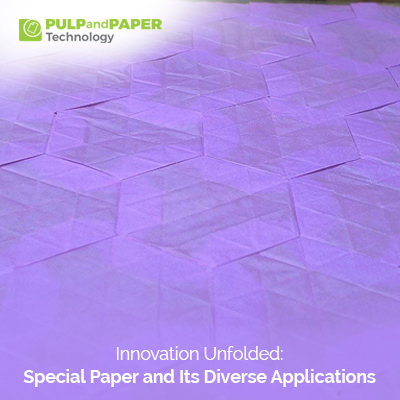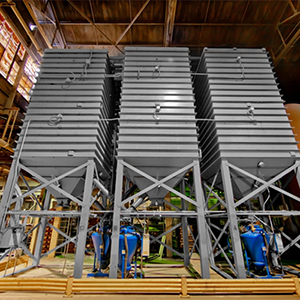Articles
Innovation Unfolded: Special Paper and Its Diverse Applications

In the realm of industrial materials, paper has long been regarded as a fundamental medium for communication and packaging. However, advancements in technology and materials science have transformed paper into a versatile and innovative material known as "special paper." This special paper is not only revolutionizing traditional uses but also finding new and diverse applications across various industries. In this article, we will delve into the world of special paper, explore its unique characteristics, and highlight its wide-ranging applications.
I. Evolution of Special Paper:
Special paper represents a significant evolution from conventional paper manufacturing. It is produced using advanced techniques that enhance its properties, making it more durable, flexible, and functional than regular paper. Key advancements in special paper production include:
Enhanced Durability: Special paper is engineered to withstand harsh conditions, such as moisture, heat, and chemicals, without compromising its integrity. This durability makes it ideal for packaging sensitive goods and outdoor applications.
Customizable Features: Manufacturers can tailor special paper to meet specific requirements, such as texture, thickness, color, and printability. This customization allows for a wide range of creative designs and applications.
Improved Sustainability: Many special papers are eco-friendly, made from recycled materials or sustainably sourced fibers. This aligns with the growing demand for environmentally responsible products across industries.
II. Applications across Industries:
Packaging and Labeling:
Special paper has become a preferred choice for premium packaging and labeling solutions. Its ability to combine aesthetics with functionality makes it ideal for luxury goods, cosmetics, food products, and pharmaceuticals. Features like water resistance, tear resistance, and printability enable brands to create visually appealing and durable packaging that enhances product value and consumer experience.
Printing and Publishing:
In the printing and publishing industry, special paper adds a touch of sophistication to marketing materials, books, magazines, and promotional items. Its smooth surface allows for high-quality printing and vibrant colors, making it popular for brochures, business cards, invitations, and artistic publications. Additionally, special paper's durability ensures long-lasting prints that maintain their visual appeal over time.
Industrial Applications:
Special paper finds extensive use in industrial applications, including filtration, insulation, abrasives, and automotive components. Filter papers are critical in air and liquid filtration systems, ensuring efficient particle removal. Insulating papers are used in electrical equipment to prevent short circuits and enhance safety. Abrasive papers are essential for sanding and polishing surfaces in manufacturing and construction. Automotive papers contribute to gaskets, filters, and interior components, benefiting from special paper's strength and heat resistance.
Specialty Products:
The versatility of special paper extends to specialty products like banknotes, security documents, tickets, and art supplies. Security features such as watermarks, holograms, and UV coatings make special paper ideal for producing secure documents that are difficult to counterfeit. Tickets and tags made from special paper withstand handling and environmental conditions during events and logistics. Artists and designers appreciate special paper for its unique textures and surfaces, enhancing the quality of their creations.
Healthcare and Hygiene:
In healthcare and hygiene applications, special paper plays a crucial role in medical packaging, disposable products, and sanitary items. Medical-grade papers ensure the sterility and integrity of pharmaceuticals, medical devices, and diagnostic kits. Disposable tissues, wipes, and hygiene products benefit from special paper's softness, absorbency, and biodegradability, promoting hygiene and sustainability in healthcare settings.
III. Future Trends and Innovations:
The future of special paper lies in continuous innovation and adaptation to emerging trends. Some key developments to watch for include:
Smart and Interactive Paper: Integration of electronics and sensors into special paper, creating interactive packaging, displays, and educational materials.
Bioactive and Sustainable Papers: Incorporation of antimicrobial agents, bioactive compounds, and sustainable fibers for eco-friendly and functional papers.
Nanotechnology Applications: Utilization of nanomaterials to enhance special paper properties such as strength, conductivity, and barrier properties.
Digital Printing Advancements: Advancements in digital printing technologies for high-resolution, customizable prints on special paper substrates.
Conclusion:
Innovation in special paper has opened up a world of possibilities across industries, from packaging and printing to healthcare and specialty products. Its unique properties, customization options, and eco-friendly nature make it a valuable choice for businesses seeking durable, functional, and visually appealing solutions. As technology continues to evolve, special paper will continue to push boundaries and inspire new applications, driving innovation and sustainability in material science.








